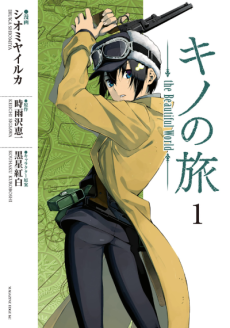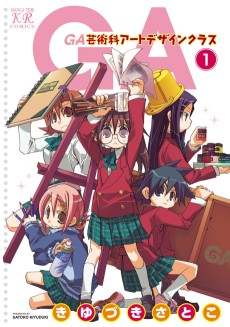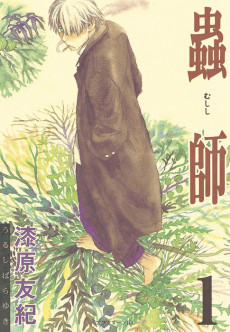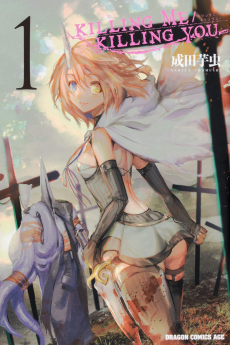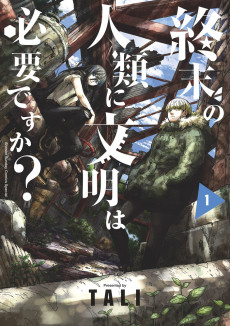HITSUGI KATSUGI NO KURO. KAICHUU TABI NO WA
STATUS
COMPLETE
VOLUMES
7
RELEASE
May 10, 2018
CHAPTERS
82
DESCRIPTION
Regularly mistaken for a boy and/or vampire, the traveler Kuro roams the land, clothed in black from head to toe, a Kuro-sized coffin on her back. Accompanied by her snarky bat friend, Sen, the mysterious duo meets all sorts of individuals en route - some good, some evil, some just plain crazy! But Kuro never stays in one place for long, begging the question: What exactly is she searching for? And what exactly does she intend to do with that coffin?!
(Source: Yen Press)
CAST
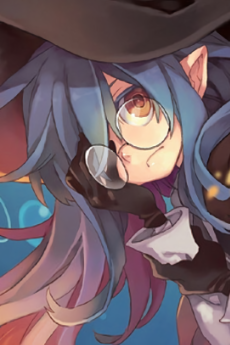
Kuro

Nijuku

Sanju

Sen

Mo
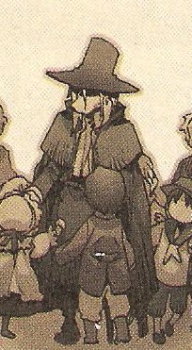
Traveler
CHAPTERS
RELATED TO HITSUGI KATSUGI NO KURO. KAICHUU TABI NO WA
REVIEWS

NetzLain
80/100Death is not something ahead of us; it is something that we must carryContinue on AniListThis review has some minor spoilers, depending on your definition of a spoiler. But honestly, it’s an abstract and open-to-interpretation type of work, so don't worry too much.
Hitsugi Katsugi no Kuro. Kaichuu Tabi no Wa, 'Kuro' for short, is a manga written by Satoko Kiyuzuki that explores dark themes such as death, grief, and anxiety in a slice-of-life setting. Presented in a 4-koma structure, often characterized by comedic and humorous elements.
My expectation going into this was the classic juxtaposition of horror and cute, but the story went beyond that. It follows Kuro in her journey with her companions Sen and the twin sisters Nijuku and Sanju, searching for a witch and a professor. The travel metaphor for life has been done before, and we have good examples such as Kino's Journey, Girls' Last Tour, and Mushishi. Even though I love the aforementioned examples, this manga managed to gain some space in my heart. It did so through the structure of the story, visual elements, and most importantly, its themes and how well it executes them.
Kiyuzuki’s art style is both whimsical and haunting, blending elements of fairy tale and gothic aesthetics, capturing your attention and bringing you into the journey. The world Kuro traverses is depicted in monochromatic tones, which accentuates the somber and contemplative mood of the story. The manga’s visual composition often uses stark contrasts and intricate details to evoke a sense of wonder and unease, mirroring the thematic depth of the narrative.
The story is masterfully written, giving you the information you need at the moment you need it. It doesn't info dump unnecessary details all at once, allowing you to get used to the world and the characters. Although the story is told in a non-linear and sometimes confusing way, the themes remain consistent. It’s as if the whole essence of the story is unified and appears in every element.
Death

Mortality, death, and the things that come along with it are still unresolved subjects in my life. Furthermore, I don't believe it is possible for us to resolve or fix this aspect of ourselves—that being fully comprehending death. Every time someone dies, there is a great variety of clichés that flow around, and if any of them actually worked, it wouldn't be a topic studied over centuries by many scholars, ranging from Epicurus and Plato to Elisabeth Kübler-Ross, who provided a framework for our current understanding of how we process loss and grief with the five stages of grief (denial, anger, bargaining, depression, acceptance).
But still, the knowledge we have doesn't suffice, and everyone deals with it in a different manner when the time comes, turning to religion, acceptance, avoidance, or even constant anxiety over this (this is my way, by the way).
The first time I attended a funeral was for a relative of mine when I was four years old, and to this day, I remember that day very clearly. Sometimes, I even think of it as my first memory—a woman desperately crying over the coffin of her dead husband. I have never seen someone cry so desperately and loudly since then, despite attending many funerals for grandparents, great-grandparents, uncles, and friends. Every time, I try to process and grieve in my own way and move on with life, but then I remember something about that person, and there I am, anxious about death again. There are still plenty of people left to die, including myself. Needless to say, this leads to a state of anxiety over death; some may even say a “sickness unto death.”

(Please forgive me, I have a strange sense of humour – This was a good pun though)
Existentialism and absurdism
"Sickness unto Death" is a book written by Søren Kierkegaard, which helped pave the way for existentialism, a philosophy that explores themes like existence and the meaning of life.
At the heart of the manga lies a profound exploration of existentialism. Kuro's journey with her coffin is symbolic of the human condition—the inevitability of death and the burden of existential angst. Kuro's constant companionship with the coffin reminds readers of the omnipresence of mortality. Her quest, filled with encounters and reflections, mirrors the existentialist search for purpose in a seemingly indifferent universe.
Despite the burdens she carries—both literally with the coffin and metaphorically with her past—Kuro continues to move forward, embodying Camus’ concept of the "absurd hero" who perseveres in the face of an irrational and meaningless world.
The absurd hero was a concept introduced by Albert Camus, in his seminal work "The Myth of Sisyphus". The absurd hero recognizes the inherent meaninglessness of life but chooses to confront it head-on, embracing the struggle without resorting to false hopes or nihilism. Kuro's journey can be seen as an allegory for the human condition in an absurd universe. Her incessant travel with the coffin, whose contents are initially unknown, symbolizes the human pursuit of purpose amidst life's uncertainties. Like Sisyphus, Kuro is engaged in a seemingly endless and purposeless task. Yet, it is her perseverance and the manner in which she confronts her journey that align her with Camus' absurd hero.
Beyond the surface
The manga has a philosophical nature and does not merely explore concepts to sell the audience some cheap morality on how to live your life; it challenges itself to go beyond the surface level.


Even though the manga has depth when exploring its themes, that is not the only reason it resonated with me. It seems to me that the author has a voice or is trying to find one on the subject of death. This reminded me of an interview where Ingmar Bergman talked about his movie The Seventh Seal (1957) and how important that movie was for him to understand and accept death. Furthermore, there are some similarities between the movie and the manga.

The movie follows a knight named Antonius Block returning to Sweden after the Crusades. He meets Death and challenges it to a chess duel while trying to find answers about life and existence. The supporting characters in both works also serve to deepen the main characters' journeys. In the manga, the various beings Kuro encounters each represent different facets of life and death, contributing to her understanding of her own journey. Similarly, in the movie, characters like Jöns (Block's squire), the mute woman, and the traveling actors provide contrasting perspectives on life, faith, and mortality, enriching Block's existential quest.
Although both deal with the same themes, the manga leans into a surreal, almost dreamlike exploration of its themes, with an emphasis on the personal and emotional aspects of Kuro's journey. It uses its fantastical setting to delve into the psychological and emotional impacts of carrying one's burdens and facing mortality.

Conclusion
Even if the nonlinear structure is sometimes confusing, the manga excels in its atmospheric storytelling and the intricate, often melancholic world it builds. The art style complements the narrative's tone with detailed, shadowy illustrations that evoke a sense of desolation and beauty. Kuro’s interactions with the various characters she meets on her journey reveal her resilience and the underlying sadness she carries. The themes of loss and the weight of one’s past are poignantly explored, making it a deeply reflective read.
Kuro's journey, burdened both literally and metaphorically by her coffin, invites readers to reflect on their own struggles with mortality and meaning, offering a philosophical meditation on life and death. By embracing her burdens and continuing her quest despite the absurdity of her circumstances, Kuro exemplifies the courage and authenticity that define the absurd hero. Through her story, the manga encourages the readers to reflect on their own journeys and the ways in which they confront the absurdity of existence and death.
SIMILAR MANGAS YOU MAY LIKE
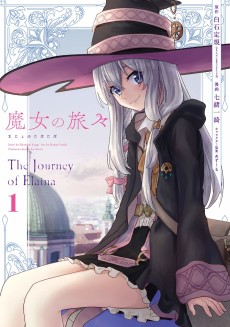 MANGA AdventureMajo no Tabitabi
MANGA AdventureMajo no Tabitabi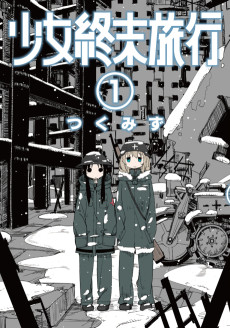 MANGA AdventureShoujo Shuumatsu Ryokou
MANGA AdventureShoujo Shuumatsu Ryokou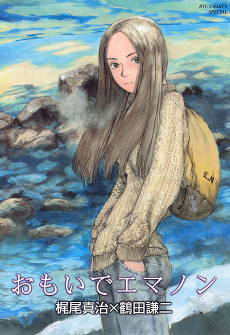 MANGA DramaOmoide Emanon
MANGA DramaOmoide Emanon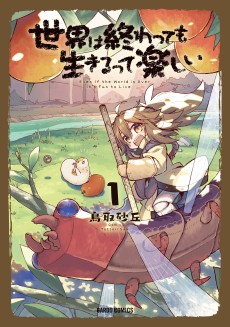 MANGA AdventureSekai wa Owattemo Ikirutte Tanoshii
MANGA AdventureSekai wa Owattemo Ikirutte Tanoshii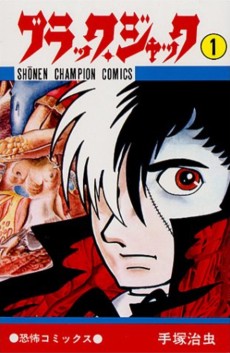 MANGA DramaBlack Jack
MANGA DramaBlack Jack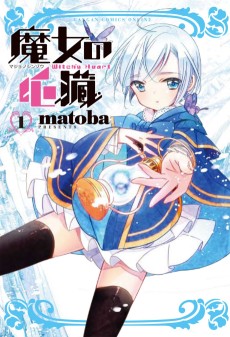 MANGA FantasyMajo no Shinzou
MANGA FantasyMajo no Shinzou
SCORE
- (3.95/5)
MORE INFO
Ended inMay 10, 2018
Favorited by 146 Users


